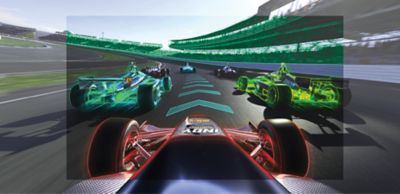-
-
学生向け無料ソフトウェアにアクセス
Ansysは次世代の技術者を支援します
学生は、世界クラスのシミュレーションソフトウェアに無料でアクセスできます。
-
今すぐAnsysに接続!
未来をデザインする
Ansysに接続して、シミュレーションが次のブレークスルーにどのように貢献できるかを確認してください。
国および地域
無料トライアル
製品およびサービス
リソースとトレーニング
当社について
Back
製品およびサービス
ANSYS BLOG
November 1, 2021
AI Takes its Place in the Race
Modern motorsport teams are at the forefront of technological innovation, whether they’re trying to shave every possible millisecond off their track time, maintain structural integrity over bruising off-road courses, or improve their handling around hairpin turns as they navigate street circuits. You may know that racing teams rely on computational fluid dynamics (CFD) for engine efficiency and aerodynamics, generative design and additive manufacturing to produce lighter weight parts without compromising strength, and explicit analysis to help ensure driver safety; but did you know they also use artificial intelligence (AI)?

Seventeen university teams competed in the Ansys Indy Autonomous Challenge Simulation Race featuring digital replicas of the vehicles and track.
I’m not talking about autonomous cars, though racing is using simulation at the vanguard of those innovations as well. For example, last month the first autonomous racecar competition at the Indianapolis Motor Speedway (IMS) took place after teams competed in the Ansys Indy Autonomous Challenge Simulation Race. Ansys provided teams with cutting-edge training and free access to products in our Ansys Autonomy suite. Ansys also built digital replicas of the racecar and IMS, and led three hackathons to help teams advance their racecar controllers.
Simulating an autonomous race is an amazing milestone that we’ll likely look back on as the beginning of bigger things, but you don’t have to look to the future to see how AI is having an impact on motorsports. Teams are already using AI and simulation to analyze and respond to real-time racing data. NASCAR team Richard Childress Racing (RCR) has used simulation and high-performance computing for years to help them make data-driven decisions before each race. Now, the team’s engineers are combining AI, simulation, digital twins, and cloud computing during the race.

Multiple- and single-car interactions are simulated to prepare for different race scenarios.
Real-Time Data Analytics
On race day, RCR and every other team receive data five times per second (5 Hz) including GPS line and lateral and longitudinal acceleration data, among other information. They receive this data not only for their own car but also for every competitor’s car by mutual agreement. Previously, each team was spending lots of money independently capturing the radio transmissions of their competitors to get this data, so they all got together and decided to share it freely to save money.
Having all this data on hand has led racing teams to use data analytics, digital twins, and AI tools on race day to gain an advantage. They can now take real-time data coming from a car and create actionable data on the spot. Teams are looking at the other guys’ steering, brake, and throttle data to see where they need to improve their own car’s performance.
During the race, machine learning and cloud computing is taking place as AI becomes incorporated into racing. For example, RCR has strategy optimization software that predicts the right call for when to pit based on how fast the tires are wearing and how the weather is changing, among other factors. Simulations like these using data from their own car and the rest of the field help RCR engineers take advantage of their strengths and opponents’ weaknesses.
Racing Toward the Finish Line with Simulation
Racing teams’ engineers are busier than ever. CFD, FEA and multiphysics simulations, topology optimization, HPC, machine learning, and AI are all part of their responsibilities. To learn more about how simulation is leading the way to the checkered flag, checkout:
- “Simulate, Compete, Repeat” to see how RCR and other NASCAR teams employ multiphysics simulations
- “Ansys and Red Bull Racing Honda Pave the Way to Track Success” to see how digital simulation has become a fundamental and integral part of Formula 1
- “Porsche Motorsport & Ansys: Speeding E-mobility Innovation from Racetracks to Roads” to learn how the TAG Heuer Porsche Formula E Team used simulation in the design of the Porsche 99X Electric, Porsche Motorsport’s first fully-electric race car
- “Supported by Ansys, Ferrari Races Toward Faster Development of Head-up Displays,” to see how the Ferrari Competizioni GT team is pioneering the use of head-up displays (HUDs) in its GT race cars